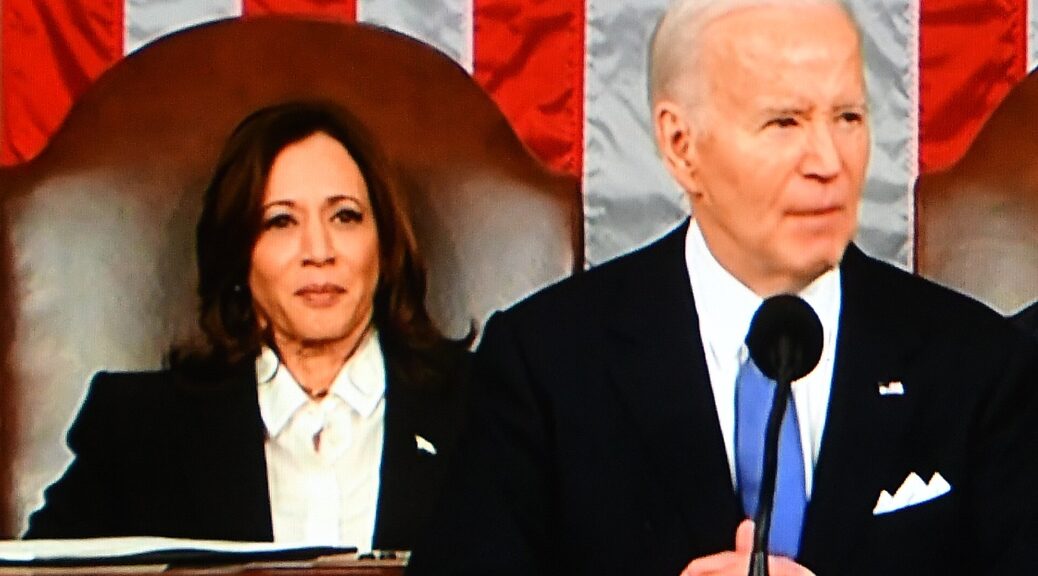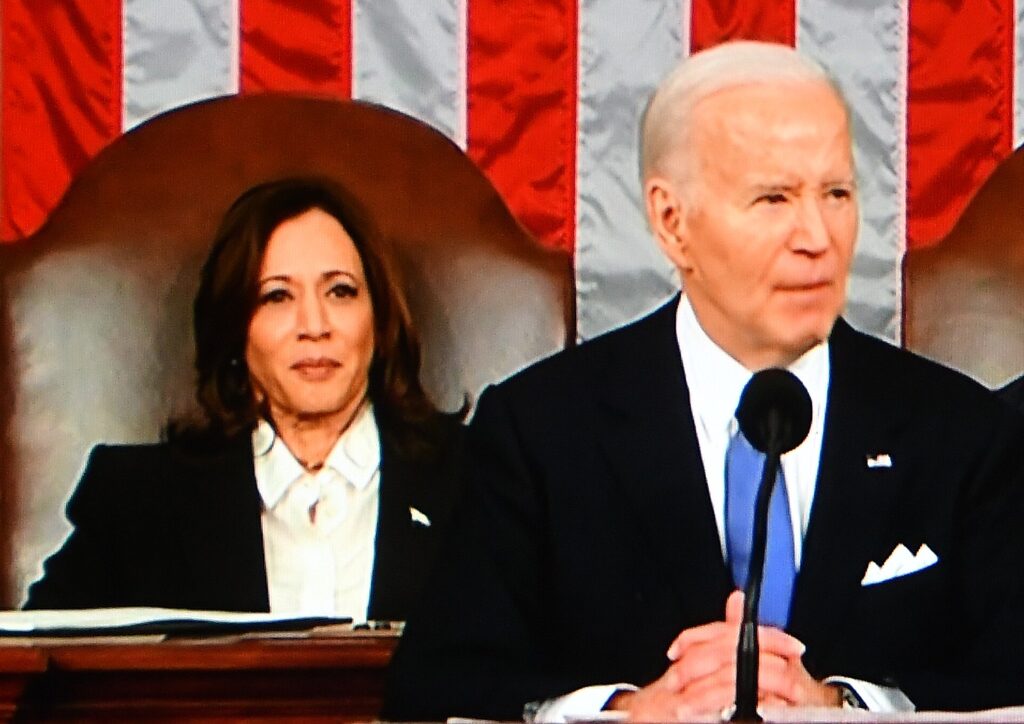Ahead of Teacher Appreciation Week, the Biden-Harris Administration announced new efforts to strengthen the teaching profession and support schools across the country, including actions to increase teacher recruitment and retention, new data on how fixes to Public Service Loan Forgiveness (PSLF) are benefitting teachers in every state and Congressional district, and new funding to increase pipelines for special education teachers. This fact sheet is provided by the White House:

Our nation’s teachers prepare and inspire the next generation of leaders who are critical to our future. President Biden has been clear since day one that to address these long-standing staffing challenges facing our schools, exacerbated by the pandemic, teachers, paraprofessionals, and other school staff need to be paid competitively and treated with the respect and dignity that they deserve, including through improved working conditions for staff and learning conditions for students.
First Lady Jill Biden, a life-long educator, is hosting the first-ever Teachers of the Year State Dinner at the White House to honor the 2024 National Teacher of the Year, Missy Testerman, and state teachers of the year from across the United States for their excellence in education.
The Biden-Harris Administration has strengthened the teaching profession by:
- Encouraging states to increase teacher pay, with 30 states and the District of Columbia taking action to raise teacher pay. To support COVID-19 recovery, the Administration secured $130 billion for the largest-ever investment in public education in history through the American Rescue Plan provided to more than 15,000 school districts and secured nearly $2 billion in additional Title I funding to date; both funding streams can be used to support teacher salaries in our most underserved schools. These funds can also be used to support high-quality teacher pipeline programs and hire more professionals across the education workforce.
- Fixing the Public Service Loan Forgiveness program, which has helped nearly 876,000 borrowers engaged in public service – such as teachers – have their federal student loans forgiven. Prior to the Biden-Harris Administration, only 7,000 borrowers had received relief under this program.
- Returning schools to pre-pandemic staffing levels. While teacher shortages remain, staffing at schools has recovered above pre-pandemic levels, including 40 percent more social workers and 25 percent more nurses, providing critical supports to students that also helps support teaching and learning.
- Expanding Registered Teacher Apprenticeship programs to 34 states, the District of Columbia, and Puerto Rico, providing an affordable and high-quality path to become a teacher in communities across the country.
- Securing a total of nearly $2.7 billion of investment in teachers in the Fiscal Year (FY) 2024 budget to help states and communities address teacher shortages, including in areas such as special education, Career and Technical Education, and bilingual education, and in underserved communities, through increased teacher recruitment, support, and retention.
Additional details on these actions are described further below.
Today, the Biden-Harris Administration is announcing new actions to support teachers:
- Establishing a new technical assistance center to help states and communities increase teacher recruitment and retention. This week, the Department of Education will release a Notice of Final Priorities and a Notice Inviting Applications and for the Comprehensive Centers grant program, which will support a Center on Strengthening and Supporting the Educator Workforce. This new Center will provide universal and targeted intensive capacity-building services designed to support States as they in turn support their districts, schools and partners in designing and scaling practices that establish and enhance high-quality, comprehensive, evidence-based, and affordable educator pathways (including educator residency and Grow Your Own programs, and emerging pathways into the profession such as registered apprenticeship programs for teachers), and in improving educator diversity, recruitment, and retention.
- Providing data from each Congressional district showing the effects of the Biden-Harris Administration’s work to fix the PSLF program. The data released today shows the distribution across the country of $62.8 billion in approved debt relief across 876,000 borrowers in every state and Congressional district. These are individuals who worked for at least 10 years in public service while repaying their loans.
- Increasing funding to support a strong pipeline of special education teachers. To date, the Administration has secured a $25 million increase in funding for the Personnel Preparation grant program under Part D of the Individuals with Disabilities Education Act compared to the beginning of the Administration, a 28 percent increase dedicated to growing our nation’s supply of special educators – a persistent shortage area. Funding under this grant can be used to support the preparation and development of special educators, including increasing the supply of special education faculty available to establish or scale up preparation programs for special educators at institutions of higher education. In the coming week, the Department will make about $10 million in new awards to grantees implementing programs under Part D of IDEA to help shore up the supply of special educators nationwide.
These announcements build on actions the Biden-Harris Administration have taken since day one to support our nation’s teachers. To date, the Administration has:
- Supported a strong educator workforce jobs recovery and helped rehire through the American Rescue Plan. As a result of the President’s decisive action to provide our schools with historic funds through the American Rescue Plan, we now have more people working in public schools than before the pandemic. Our schools lost hundreds of thousands of local public education jobs in just three months during the pandemic. Since President Biden took office, schools have added 638,000 education jobs. As of March 2024, there were 23,000 more employees in local public education than in February 2020. But there is still work to do. Teacher shortages remain and vary significantly across communities, disproportionately impacting students of color, students with disabilities, English learners, and students from low-income backgrounds.
- Increased investments by $112 million in preparing, recruiting, developing, and retaining teachers since the beginning of this Administration. As a result of the additional funds the Administration has secured in these programs since the beginning of the Administration and through FY23, an additional $112 million has been invested in supporting educators through Department of Education’s competitive grant programs, in addition to the tens of billions invested in staffing through the American Rescue Plan. For example, the Administration has increased annual funding for the Teacher Quality Partnership Grant program by 34 percent, which supports year-long teacher residency programs that have been shown to increase teacher effectiveness, retention, and diversity.
- Funded educator diversity efforts nationwide. The Administration has prioritized efforts to increase educator diversity across 15 competitive grant programs that support teacher preparation, development, recruitment, and retention. These programs awarded nearly $450 million to 263 grantees, 92 percent of which were to grantees that addressed specific priorities related to educator diversity. For example, this year the Department plans to award $15 million to fund up to 27 new awards to Historically Black Colleges and Universities (HBCUs), Tribally Controlled Colleges and Universities (TCCUs), and Minority Serving Institutions (MSIs) through the Augustus F. Hawkins program, which works to increase the numbers of diverse personnel in early intervention, special education, and related services.
- Expanded high-quality teacher preparation programs through Registered Teacher Apprenticeships. At the beginning of this Administration, there were no Registered Apprenticeship Programs for teachers. Today, there are registered programs in 34 states, the District of Columbia and Puerto Rico. These programs can serve to provide affordable and high-quality pathways into the profession, allowing apprentices to earn a salary and benefits while they prepare to become a teacher, including by scaling up evidence-based Grow Your Own and Teacher Residency programs, which help to increase teacher retention, effectiveness, and diversity.
- Relieved teacher student loan debt through forgiveness, repayment, and grant programs. The Administration has approved almost $160 billion in student debt forgiveness for nearly 4.6 million borrowers through various actions, including $62.8 billion in forgiveness for almost 876,000 borrowers through fixes to PSLF. The Administration has also secured the largest increase to Pell Grants in a decade and launched the new SAVE plan – the most affordable student loan repayment plan ever. The Administration estimates that a first-year teacher with a bachelor’s degree would save $17,000 in payments on the SAVE plan while seeking PSLF. This Administration also implemented changes to the TEACH Grant program to support teacher recruitment and retention in our most underserved communities. The TEACH Grant provides up to $16,000 to undergraduate and graduate students who commit to teaching in a high-need field and school serving students from low-income backgrounds for four years.
- Secured first-ever funding for the Augustus F. Hawkins Centers of Excellence Grants. The Department held the first-ever competition for the Augustus F. Hawkins Grant program, awarding $23 million to date to teacher preparation programs at HBCUs, TCCUs, and MSIs to increase the number of well-prepared teacher candidates, including teacher candidates of color and bilingual and multilingual educators, in the field. The Department is currently administering an additional competition for the Hawkins grant program with $15 million in funding available, with applications due in June 2024.
- Launched a campaign to elevate the teaching profession and call for increasing teacher pay. The Department launched “Teachers: Leaders Shaping Lives” – a campaign to elevate the teaching profession and promote educator diversity. The new Public Service Announcement was developed in partnership with TEACH.org and the One Million Teachers of Color Campaign at the Hunt Institute. This Administration believes that educators should be treated with dignity and respect and receive the pay they deserve – and has encouraged all states to increase compensation so that teachers are paid a livable and competitive wage. Since the 2021-22 school year, 30 states and the District of Columbia have taken action at the state level to increase teacher pay.
- Provided extensive Technical Assistance and Guidance on how to use federal and other resources to implement evidence-based strategies to support teacher preparation, recruitment, retention, development, and advancement. This includes; (1) establishing the Strengthening and Diversifying the Educator Workforce Workgroup which brings together States from across the country to share resources and discuss lessons learned and best practices for supporting teacher development, recruitment, retention and diversity; (2) updating guidance on the use of Perkins V funds to improve the recruitment, preparation, retention, and growth of future educators, including Career and Technical Education teachers; (3) issuing a collection of seven briefs outlining the most common challenges related to recruiting and retaining teachers from underrepresented backgrounds or with certain certifications; (4) sharing best practices, key resources, and making data on job recovery, educator preparation, educator diversity, and compensation, and other related issues easier to access and use through the Department’s Raise the Bar: Eliminating Educator Shortages website; and (5) issuing guidance on how American Rescue Plan funds can be used to stabilize the teacher workforce and support teacher well-being.
First Lady Jill Biden Hosts First-Ever “Teachers of the Year” State Dinner
To further demonstrate their appreciation for teachers, First Lady Jill Biden hosted the first-ever “Teachers of the Year” State Dinner at the White House. The event honored the 2024 National Teacher of the Year, Missy Testerman from Tennessee, and the State Teachers of the Year from across the country for their excellence in teaching and commitment to students’ learning.
“Tonight, we celebrate you, because teaching isn’t just a job, it’s a calling, and all of you were called to this profession for a reason,” Dr. Biden said in her welcoming remarks. “You believe that a better world is possible – and you make that world real, one student at a time. To answer the call of teaching, is in itself, an act of hope. You look at your students and don’t just see who they are today – you see all the possibility of tomorrow. You help them find the light within themselves, and that light lives on in all of you.”
As a classroom teacher for over 30 years, Dr. Biden continues to teach English and writing at Northern Virginia Community College, where she has been a professor since 2009. From championing teacher recruitment and retention, opportunities for career-connected learning, and more affordable options for education after high school, including free community college, Dr. Biden continues to shine a spotlight on educators and the teaching profession. This is the fourth year Dr. Biden has welcomed the National and State Teachers of the Year for a celebration at the White House.
The Council of Chief State School Officers (CCSSO), the U.S. Department of Education, American Federation of Teachers, and the National Education Association are supporting this event. CCSSO oversees the National Teacher of the Year Program, which identifies exceptional teachers across the country, recognizes their effective work in the classroom, engages them in a year of professional learning, and amplifies their voices.
More information about the program and a list of the 2024 State Teachers of the Year can be found HERE.
First Lady Jill Biden and Social Secretary Carlos Elizondo worked with White House Chief Floral Designer Hedieh Ghaffarian to create a guest experience that honors the 2024 Teachers of the Year and celebrates our nation’s educators.
Each of the 2024 State Teachers of the Year received a commemorative brass bell from the First Lady, continuing a tradition she started in 2021 in honor of her grandmother, a fellow educator and the person who inspired her to become a teacher. Irises, the official state flower of Tennessee, Mrs. Testerman’s home state, were incorporated in the floral arrangements. A personalized gold painted apple served as the place card holder at the place settings for the 2024 Teachers of the Year.
The décor was inspired by classrooms across the country, and the official flags of the states and territories of the 2024 State Teachers of the Year lined the East Portico entrance, greeting honorees and guests upon arrival to the White House.
Organized by each teacher’s school principal, when the 2024 Teachers of the Year arrived to their seats, they were surprised with a handmade, personalized thank you note from their students, fellow teachers, and school leadership.














